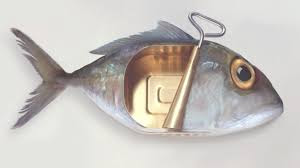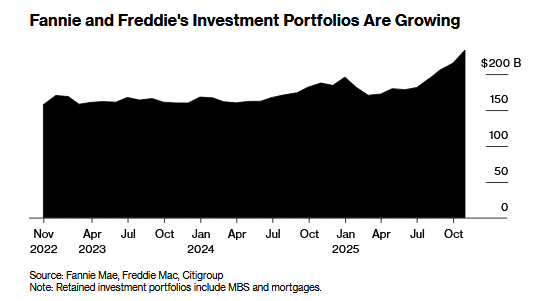The $1.1475-$1.1550 is an important area for the euro. Many bulls see a rounded bottom being carved and a break above it would be embraced as a confirmation. The lower-end corresponds to the 100-day moving average. Such a bottom pattern, if confirmed, would project toward $1.1800 the high in H2 18. On the downside, the low from H2 18 was near $1.1200. This is just above a key (61.8%) retracement of the January 2017-February 2018 rally. A convincing break of it would signal a new leg down in the euro that could potentially carry it into the $1.05-$1.08 range.
The bull case for the euro rests on three premises: The bad news has been discounted, fiscal policy will be less of a drag, and US problems are mounting. The first is questionable. The Spanish and Germany November inflation, reported before the weekend fell more than expected, largely reflecting the drop in oil prices. And this is after the November PMIs disappointed as well. The continuing slowdown of the Chinese economy is also bound to hit the export-oriented economies, and especially Germany. On the other hand, the market has already pushed out what was thought to be a late 2019 hike into H2 2020.
What else can the market do? It can price in a cut rather than a hike. In effect, that is what the market has done in the US. From pricing in a couple of hikes next year, the market appears to have mostly discounted a Fed cut in 2020. Of course, at first, and perhaps with some guidance by the ECB, the market can push out the rate hike further into 2020 and then beyond. However, if the economy continues to soften more action may be required. There is already some speculation that another Targeted Long-Term Repo Operation (TLTRO), a three-year low rate loan to banks for lending to non-financial businesses and households. The problem, though, may not be the supply of funds but demand.
The question may become what should it do: Resume asset purchase or cut interest rates (where the deposit rate already sits at minus 40 bp)? It may depend on the timing of the issue and the personnel on the ECB Executive Board, but we suspect the ECB would be more inclined to deal with the unintended consequences of a more negative deposit rate than the renew the asset purchases, especially so quickly after winding them down.
It is fair that fiscal policy may be less of a drag on growth in the euro area next year, but it should not be exaggerated. We are talking tenths of percentage points, and even then, it needs to be cyclically adjusted. While France and Italy appear set to get by with slightly larger budget deficits than planned a year ago, ahead of the weekend, the Senate rejected Spain’s minority government’s 1.8% projected increase in spending, forcing it to live within the 1.3% goal of the previous government. Germany and Italy contracted in Q3. The French composite PMI fell below the 50 boom/bust level in December. Softer growth can push up deficit/GDP ratios through the automatic stabilizers (e.g., unemployment compensation) and also denominator (growth can slow or reverse). Any growth disappointments will also be reflected in larger fiscal shortfalls.
The most compelling argument for the euro is that the situation in the US is deteriorating. The federal government limps into the new year with a partial shutdown because Congress, controlling the purse strings, is not earmarking as much money as the President wants that can be used to build a wall on the border with Mexico. The Mueller investigation proceeds and is expected to come to a head in a few months (Q2?). The agreement not to escalate the tariffs between the US and China has a March 1 deadline. Of course, it can be changed, and that is the point: Uncertainty. In April, the exemptions granted on Iranian oil sales expire. This too will produce uncertainty and disruption.
The President’s fiscal policy ran counter to his trade policy. The extent of the current account deterioration may have been masked by the tax-incentivized repatriation of foreign earnings. This suggests some catch-up next year. And at the same time as the external deficit is growing, so too is the budget deficit. In order to attract foreign investment, the US has to offer higher rates, a lower dollar, or more likely some combination.
Indeed, the dollar looks vulnerable as US yields remain soft despite the tentative break in the equity market’s slide and the easing of the sharp downside momentum in oil. The US 10-year yield reached a ten-month low before the weekend. The premium over Germany (so much for the so-called exorbitant privilege) has fallen 30 basis point since early November, and at a little below 250 bp. it is the least since August. The US is paying the smallest premium over Germany to borrow two-year money in seven months. The 312 bp premium compares with a peak on November 8 around 355 bp. We often find direction is more important than the level for impact on the exchange rate.
Robust economic data could help ease recession worries, but with the government shutdown, may take some time to sort out. Even though the Labor Department has been funded, during past shutdowns, the non-farm payroll report has been delayed. Economists expect a rebound after a soft November and average hourly earnings to hover around 3%. A sense of investor, both foreign and domestic, demand at the US Treasury auctions will be important to monitor at the start of the New Year.
Comments by Fed officials, and in particular, the leadership (Powell, Clarida, and Williams) may be helpful for investors. While we accept that the signaling impact of the asset purchases was more important than the increased central bank balance sheet, we understand the confusion that the Fed helped sow about it. At the same time, we recognize that it is awkward, and arguably, counterproductive for the Fed to admit that it is a confidence game. That said, we suspect Fed officials can say a bit more about why reducing its balance sheet is not tantamount to tightening policy.
On trade, the President cannot appease both investors and his political base, which ostensibly shares his penchant for protecting American industry. China continues to make concessions, but given the divergence between its declaratory and operational policies, it will take time to see results. And even when if the results would be evident, would they be meaningful or sufficiently meaningful to the Administration who comes the closest to demanding regime change to normalize relations.
The divergence between the economy and markets may be more apparent than real, and the divergence between the Fed and the market will close. The threat of escalating trade tensions in 2019, as deals with Japan, Europe, and China are sought, is likely to be a recurring theme.
If the euro is going to rally, it is hard to see it being driven by good things in Europe. The political center is weak, and this turns small challenges into crisis. The traditional elites in many countries are being challenged. This will likely be evident in the new European Parliament and in numerous national elections. The incomplete union, with a weakening economy, and softening inflation, amid a change in the guard at the European Commission and European Central Bank, with a negative deposit rate means the euro is an awkward alternative to the dollar.
It sometimes seems that the US dollar does well in particularly bad times and particularly good times, but during the ho-hum period, investors prefer other currencies. Perhaps the euro has an upside-down smile (frown), whereby it does poorly when it is under stress and when the US economy is strong, and interest rates are rising. Only in those periods in which Europe is doing well, and the US is doing poorly does the euro seem to benefit. The problem is the US business cycle is longer and flatter (e.g., Great Moderation still intact despite the Great Financial Crisis?) and Europe typically underperforms.
Full story here Are you the author? Previous post See more for Next postTags: #USD,$EUR,$TLT,ECB,Federal Reserve,newsletter


































